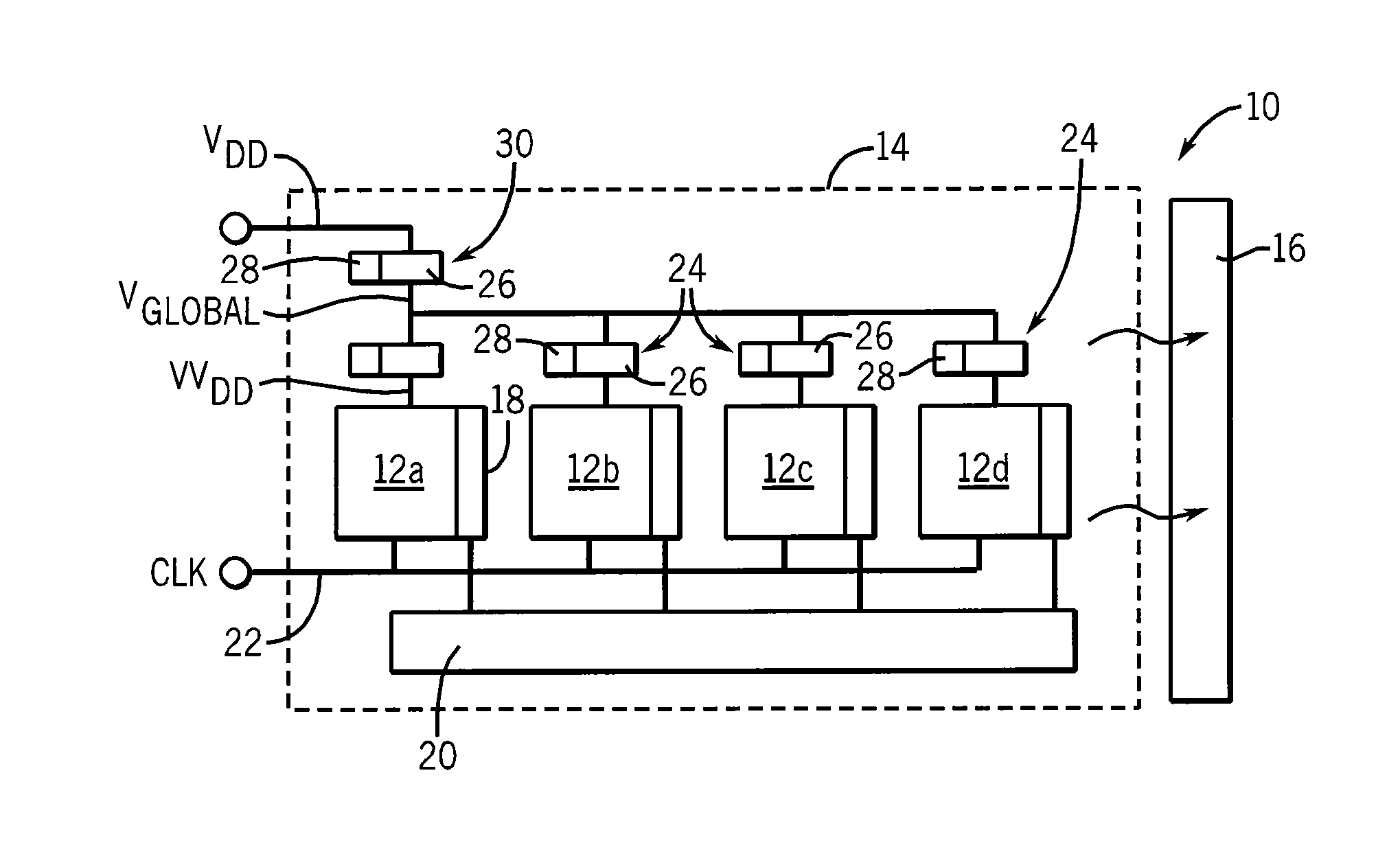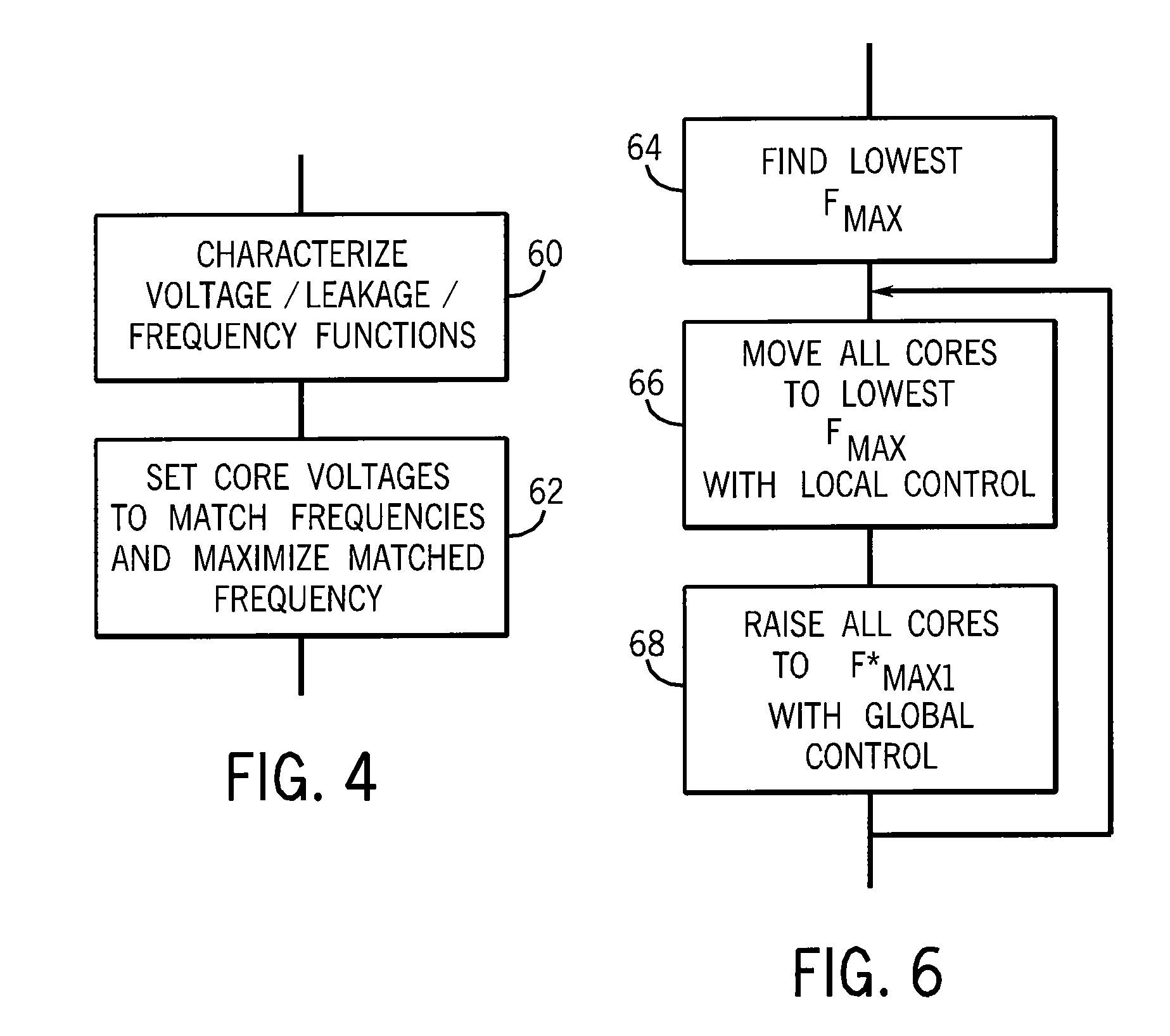Method and Apparatus for Optimizing Clock Speed and Power Dissipation in Multicore Architectures
a multicore processor and clock speed technology, applied in the direction of instruments, liquid/fluent solid measurement, generating/distributing signals, etc., can solve the problems of total power dissipation, significant variations in maximum operating frequency, and the spread of device delay and leakage power across the cores of multicore processors, so as to maximize the operating frequency of a multicore processor, reduce the voltage of faster cores, and increase the voltage of all cores
- Summary
- Abstract
- Description
- Claims
- Application Information
AI Technical Summary
Benefits of technology
Problems solved by technology
Method used
Image
Examples
Embodiment Construction
[0027]Referring now to FIG. 1, a multicore processor 10 may include multiple processor cores 12a-12d. As is understood in the art, cores 12 provide for numerical processing of program instructions according to arithmetic and logical circuits implemented by transistors. These processor cores 12 may be formed on a single integrated circuit die or may be multiple dies attached on a substrate providing a common thermal environment 14 communicating with a heatsink 16 or the like. The common thermal environment means that the temperature of one core 12 affects the temperature of the other cores 12.
[0028]The cores 12 may include local cache memories 18 and a shared memory 20 which may be implemented through a single memory structure or by a message passing technique of a type known in the art. Each of the cores 12 may receive a clock signal 22 that synchronizes their internal operation and thus controls their speed of computations. Normally the clock signals will be identical for each core...
PUM
 Login to View More
Login to View More Abstract
Description
Claims
Application Information
 Login to View More
Login to View More - R&D
- Intellectual Property
- Life Sciences
- Materials
- Tech Scout
- Unparalleled Data Quality
- Higher Quality Content
- 60% Fewer Hallucinations
Browse by: Latest US Patents, China's latest patents, Technical Efficacy Thesaurus, Application Domain, Technology Topic, Popular Technical Reports.
© 2025 PatSnap. All rights reserved.Legal|Privacy policy|Modern Slavery Act Transparency Statement|Sitemap|About US| Contact US: help@patsnap.com



